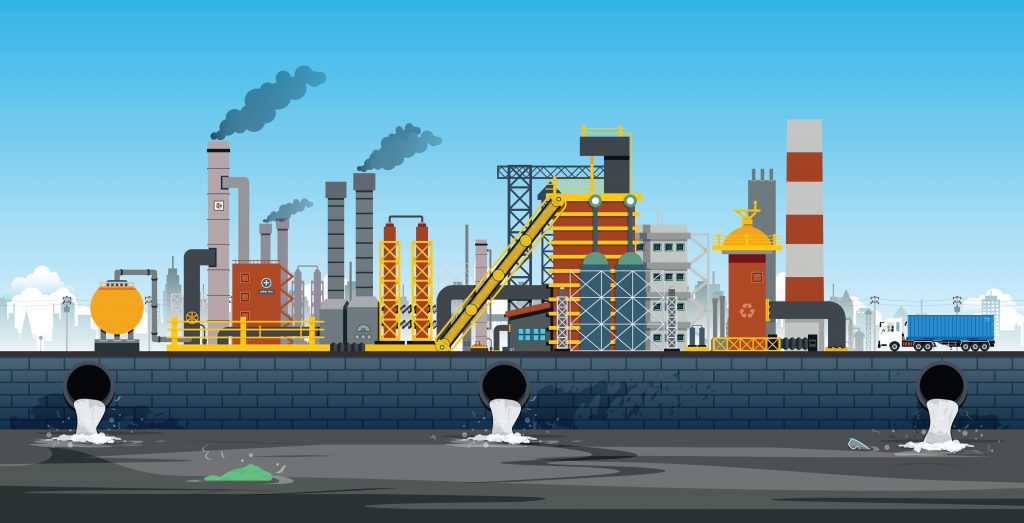Water is life! We cannot imagine life on earth without water. Water covers around 71% of the total land on the planet. The increasing population around the world has made the water resource scarce in certain parts of the globe. With the depletion of water, wastewater treatment is the need of the hour.
Water intended for human consumption should be both safe and wholesome. Potable water that is fit for consumption should be:
a. Free from pathogenic agents
b. Free from harmful chemical substances.
c. Pleasant to taste, i.e., free from color and odor
d. Useful for all domestic needs.
It must be available close to the people. The process of transporting the water might result in pollution. Because of the difficulty in getting the water from a faraway source, people might start using water from other sources which may not be potable.
The essential drinking water requirement has been estimated at 2 liters per head per day, just for survival. However, a daily supply of 150-200 liters per capita is considered adequate to meet the domestic needs of the urban population.
Uses of water
- Domestic services – drinking, cooking.
- Public purposes and fire protection cleaning streets
- Industrial uses – factories
- Agricultural purposes – irrigation
What is wastewater treatment?
Wastewater treatment is the process of converting wastewater into usable water. Wastewater comprises water that you flush down from your toilet, drain out from your kitchen and bathroom, even the rainwater mixed with pollutants on the streets and mingled with the gutter water, and even water from agricultural, industrial sources. All this wastewater eventually undergoes water treatment and is brought to use.
Wastewater treatment is not an easy process. Industrial wastewater is more challenging to treat than domestic wastewater as it constitutes a more significant amount of chemicals, pharmaceutical wastes.
Step of wastewater treatment
Wastewater treatment has two levels.
Level 1: Primary Treatment
Here the impurities that float on water or readily settle down due to the gravitational force are removed. The water goes through screening and sedimentation to remove all the floating objects and suspended organic and inorganic matter.
Primary treatment alone is not sufficient to completely treat wastewater and cannot meet the needs of the communities.
Level 2: Secondary Treatment
The secondary wastewater treatment removes the soluble form of organic matter and other suspended solid wastes left out in the primary treatment. Around 85% of organic matter is removed in this process. The water here undergoes filtration and an activated sludge process.
Benefits of wastewater treatment
Clean and safe water for consumption
Not many know that wastewater can be reused. The wastewater goes through levels of treatment and is made free from harmful toxins and pollutants. This treated water is clean and safe for consumption. Though water is a renewable resource, it takes a lot of time to evaporate and cause rain, removing toxins naturally. However, wastewater management is a quick process that helps provide clean and safe water reusable. Removes Disease-causing agents- The wastewater treatment process removes the disease-causing contaminants and agents through filtration and sedimentation. Further treatment of the water makes it free from harmful disease-causing organisms. This helps in keeping the potential diseases and bacterias at bay.
An approach to minimize waste
The wastewater treatment of industrial water helps reduce waste released into the environment. The wastewater treatment process ensures that the chemical containing wastewater discharged from the industries is safe and environment friendly.
Beneficial to the environment
The reason why wastewater is treated is that it can be reused and, at the same time, prevents the release of harmful pollutants and toxins into the environment. If the water-containing toxic chemicals and pharmaceuticals are released in other water bodies, it may endanger the lives of those water bodies irrespective of humans and marine lives. It is a must to treat industrial wastewater.
Reduces and prevents waterborne Pollution
Water pollutants can be removed through the treatment plant. Water that is not treated efficiently may contain fecal matter, bacterial microbes, and other contaminants which promote water pollution. This can be minimized by clarifying wastewater, removing heavy metals and metallic substances, removing sand and grit particles, and suspended dust particles from the water, thereby preventing waterborne pollution.
Recovery of byproducts
This is more effective when treating industrial wastewater. The industries use a lot of water which contains industrial byproducts that may have got washed away in the flowing water. All these useful byproducts can be recovered by setting a wastewater treatment system. Before releasing it into the water bodies, the water should be treated to recover industrial products like metal scraps, steel, and other residual materials.
Improvement inefficiency
Wastewater treatment improves the efficiency of manufacturing by your industry. It removes the finest of impurities and inorganic matters. It quickly separates the liquid-solid substances realized by the enterprises, thus improving the manufacturing and efficiency of industrial production.
Conclusion
Wastewater treatment is beneficial for the industries and the manufacturing companies and for the people where we see water scarcity. The only thing you have to ensure is selecting a high-quality wastewater treatment system.



